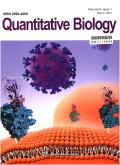GCARDTI: Drug–target interaction prediction based on a hybrid mechanism in drug SELFIES
IF 0.6
4区 生物学
Q4 MATHEMATICAL & COMPUTATIONAL BIOLOGY
引用次数: 0
Abstract
The prediction of the interaction between a drug and a target is the most critical issue in the fields of drug development and repurposing. However, there are still two challenges in current deep learning research: (i) the structural information of drug molecules is not fully explored in most drug target studies, and the previous drug SMILES does not correspond well to effective drug molecules and (ii) exploration of the potential relationship between drugs and targets is in need of improvement. In this work, we use a new and better representation of the effective molecular graph structure, SELFIES. We propose a hybrid mechanism framework based on convolutional neural network and graph attention network to capture multi‐view feature information of drug and target molecular structures, and we aim to enhance the ability to capture interaction sites between a drug and a target. In this study, our experiments using two different datasets show that the GCARDTI model outperforms a variety of different model algorithms on different metrics. We also demonstrate the accuracy of our model through two case studies.GCARDTI:基于药物 SELFIES 混合机制的药物-靶点相互作用预测
预测药物与靶点之间的相互作用是药物开发和再利用领域最关键的问题。然而,目前的深度学习研究仍存在两个难题:(1)大多数药物靶点研究中,药物分子的结构信息没有被充分挖掘,以往的药物SMILES与有效药物分子的对应关系并不理想;(2)对药物与靶点之间潜在关系的挖掘有待改进。在这项工作中,我们使用了一种新的、更好的有效分子图结构表征--SELFIES。我们提出了一种基于卷积神经网络和图注意网络的混合机制框架,以捕捉药物和靶标分子结构的多视角特征信息,并致力于提高捕捉药物和靶标之间相互作用位点的能力。在本研究中,我们使用两个不同数据集进行的实验表明,GCARDTI 模型在不同指标上优于各种不同的模型算法。我们还通过两个案例研究证明了我们模型的准确性。
本文章由计算机程序翻译,如有差异,请以英文原文为准。
求助全文
约1分钟内获得全文
求助全文
来源期刊

Quantitative Biology
MATHEMATICAL & COMPUTATIONAL BIOLOGY-
CiteScore
5.00
自引率
3.20%
发文量
264
期刊介绍:
Quantitative Biology is an interdisciplinary journal that focuses on original research that uses quantitative approaches and technologies to analyze and integrate biological systems, construct and model engineered life systems, and gain a deeper understanding of the life sciences. It aims to provide a platform for not only the analysis but also the integration and construction of biological systems. It is a quarterly journal seeking to provide an inter- and multi-disciplinary forum for a broad blend of peer-reviewed academic papers in order to promote rapid communication and exchange between scientists in the East and the West. The content of Quantitative Biology will mainly focus on the two broad and related areas: ·bioinformatics and computational biology, which focuses on dealing with information technologies and computational methodologies that can efficiently and accurately manipulate –omics data and transform molecular information into biological knowledge. ·systems and synthetic biology, which focuses on complex interactions in biological systems and the emergent functional properties, and on the design and construction of new biological functions and systems. Its goal is to reflect the significant advances made in quantitatively investigating and modeling both natural and engineered life systems at the molecular and higher levels. The journal particularly encourages original papers that link novel theory with cutting-edge experiments, especially in the newly emerging and multi-disciplinary areas of research. The journal also welcomes high-quality reviews and perspective articles.
 求助内容:
求助内容: 应助结果提醒方式:
应助结果提醒方式:


